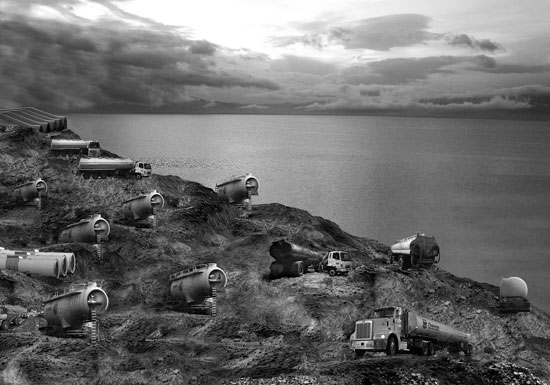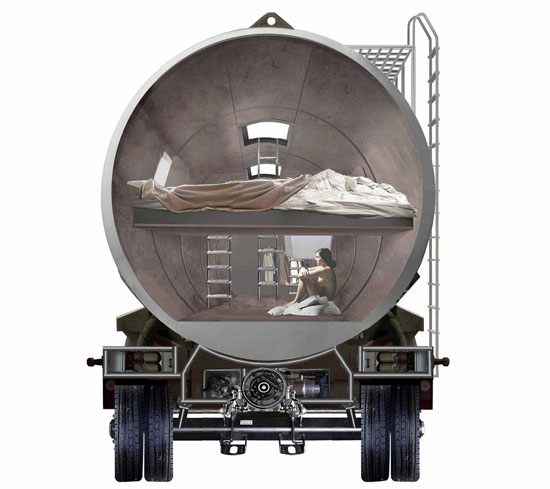The post Reinventing the Automobile on FastCompany showcases the city-car concept illustrated by the book William Mitchell, Christopher E. Borroni-Bird, and Lawrence D. Burns recently published "Reinventing the Automobile: Personal Urban Mobility for the 21st Century " Although this idea of the micro-transit unit has its appeal - it allows for individual control of travel (when and whereto), protection from weather, and smaller footprint (both carbon and physical), it has its drawbacks too. This mode will face similar issues as bicycles have faced for years - a respected place on the road. Smaller than regular vehicles and the larger trucks and buses, there is risk involve, as many bicyclists are well aware. Perhaps separate lanes could be crafted - as shown below - but then do the bicyclists really feel safer if their lane is shared with motorized vehicles, pint-sized or not? If there were such grand boulevards as to allow for the implementation of such a plan as illustrated, perhaps the significantly wider bike/city-car lane would work. However, I do hope that pedestrians are so negated as to have standing room only when they get out of their city-cars or step off the bus. Note, the space for parking city-car's should not be considered sidewalk, sidewalks are spaces for non-vehicular mobility - i.e. your feet, or wheelchair (if its motorized it may be required to run in the "small-mode" lane).
" Although this idea of the micro-transit unit has its appeal - it allows for individual control of travel (when and whereto), protection from weather, and smaller footprint (both carbon and physical), it has its drawbacks too. This mode will face similar issues as bicycles have faced for years - a respected place on the road. Smaller than regular vehicles and the larger trucks and buses, there is risk involve, as many bicyclists are well aware. Perhaps separate lanes could be crafted - as shown below - but then do the bicyclists really feel safer if their lane is shared with motorized vehicles, pint-sized or not? If there were such grand boulevards as to allow for the implementation of such a plan as illustrated, perhaps the significantly wider bike/city-car lane would work. However, I do hope that pedestrians are so negated as to have standing room only when they get out of their city-cars or step off the bus. Note, the space for parking city-car's should not be considered sidewalk, sidewalks are spaces for non-vehicular mobility - i.e. your feet, or wheelchair (if its motorized it may be required to run in the "small-mode" lane).

via FastCompany
What may better serve the cities which may choose to embrace the kindler/gentler future of city-car's would be a retro-fit plan. In Philadelphia, the Chestnut Street Transitway - a short lived, and clearly unsuccessful venture of American urban pedestrian mall may get a second, more successful life. It could be that Bacon, and other such planners had the right ideas, just at the wrong time - both culturally and technologically. As the original drawings from the Philadelphia City Planning Commission illustrate, the concept was to be largely pedestrian with a trolley line running down a narrowed street. What if this were small-mode only? It may not work in Philadelphia - most folks here commute out of the city, highways are no place for vehicles smaller than a Smart car. However, if you could get folks to buy into the city-car concept, car-share programs convert to or add city-car fleets, issue tax rebates for urban residents to downsize their vehicles (if not eliminate entirely), then you could have streets with bikes and pedestrians and city-cars. Buses would be on schedule because of reduced congestion, taxi drivers might take issue, but there will always be folks unable or unwilling to drive themselves from place to place.

via Philadelphia Planning Commission, archive








